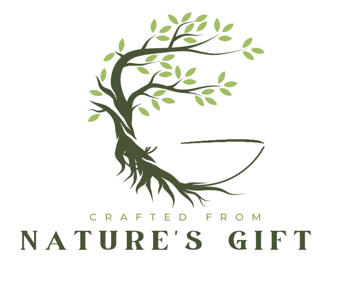Discover Sustainable Clay: What is Clay?
Explore the fascinating world of clay, a gift from the earth. Learn about sustainable clay practices and how creating with clay benefits both artists and the environment.
10/22/20245 min read


As questions arose for me about the sustainability of wood and fallen trees, I started to think about my own craft. What impact does creating in clay have, and how can I create more sustainably?
What is Clay
Clay is soft and earthy and often looks and feels like playing with mud. However, unlike mud, which is largely soil and water, clay is a mineral substance containing varying amounts of potassium, sodium, calcium and/or lithium. It is the most abundant group of minerals in the earth’s crust making up about 50% of all rocks.
Clay is formed as a result of the weathering and erosion of rocks over vast periods of time The colour and types of clay will depend on the additional minerals the clay has picked up during its creation. For example, terracotta clay is reddish type of clay which has picked up iron during its creation.
I like to think of clay as a gift from the earth. It’s a material with ancient roots, used for centuries in everything from simple pottery to intricate sculptures. But in today’s world of environmental awareness, even time-honoured materials like clay deserve a closer look—especially as I reflect on my own creative practices. Let’s dive into the sustainability of working with clay and explore ways to make the process even greener.
The Environmental Impact of Clay
Clay itself is a natural resource. It’s abundant and doesn't contribute to deforestation or harmful mining practices. Clay is essentially earth, made from decomposed rocks and minerals, found all over the world. In its raw form, it’s renewable, biodegradable, and eco-friendly.
However, when we consider the full lifecycle of clay-based crafts, there are some environmental impacts to be aware of:
Mining and extraction: While clay is plentiful, its mining and transportation can still cause land disruption and carbon emissions.
Kiln firing: Firing clay, especially at high temperatures, requires significant energy. If your kiln runs on electricity or gas, the carbon footprint can be substantial.
Glazing: Many traditional glazes contain harmful chemicals that can be toxic to the environment and humans if mishandled.
Waste: Fired clay becomes ceramics and can’t be re-used—like broken pieces or offcuts—becomes waste, and some glazes make recycling more difficult.
How Can We Make Clay Crafting More Sustainable?
Here are some steps to reduce the environmental impact of working with clay:
1. Source your clay locally
Finding a local clay supplier, or even digging your own, reduces the need for long-distance transport. i have found clay in woodlands, by rivers and even at the beach. This can also supports your local economy. In some communities, shared clay pits allow for sustainable harvesting without relying on large commercial suppliers. I also have been told that grave diggers can be helpful but this is not one I have tried yet.
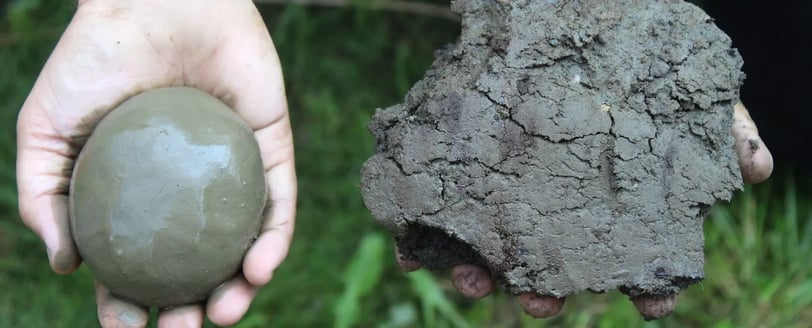

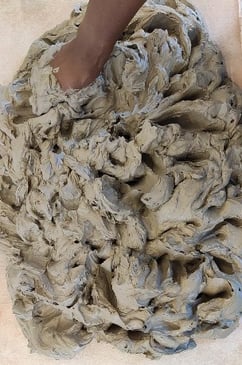

2. Recycle and reclaim clay
Clay is forgiving—unfired clay can be reworked and reused indefinitely. Keep a bucket in your studio for wet scraps and recycle them back into your main supply once full.
3. Choose sustainable firing methods
Traditional electric kilns consume a lot of energy. Consider using renewable energy sources, like solar power, to fire your kiln. Low-temperature firing techniques, such as pit firing (my personal favorite), are another option. I’ve also used communal kilns, like for my clay pieces at Chiswick House, which reduce energy use per piece by batching work with others.
4. Use eco-friendly glazes
Many non-toxic, food-safe glazes are now available as alternatives to traditional ones containing harmful chemicals. You could even try making your own natural glazes using materials like wood ash or plant-based additives to create beautiful, earth-friendly finishes.
5. Rethink your studio practices
Sustainability goes beyond the materials you use. Simple changes—like utilizing natural light, switching to reusable towels instead of paper, or cutting back on plastic packaging—can reduce your studio’s environmental footprint.
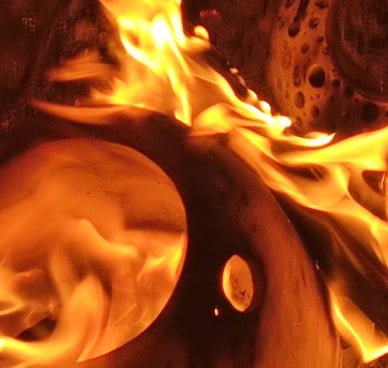

6. Reduce waste
Be mindful of the materials you use. Design with intent to minimize offcuts, and reclaim leftover clay whenever possible. Even broken fired pieces can be repurposed by grinding them into grog (ground-up fired clay), adding texture and strength to new projects.
7. Experiment with unfired clay
Not all clay creations need to be fired. Sometimes, the joy of creation can be more important than the final product. In these cases, unfired pieces can be reconstituted and reused. I have a few of creations like this on my shelves.
I process is rather then product is important to you Homemade Clays/Cold Porcelain are a good option. You can make clay at home using cornstarch, white glue, and lemon juice. This DIY approach allows complete control over the materials, ensuring they are non-toxic, inexpensive and environmentally friendly option. Homemade clays often mimic the texture and workability of polymer clay although depending on the recipe they can sometimes be bit tricky to work with due to its tackiness.
Air-dry clay is another option, though it’s less durable and can contain synthetic materials, which aren't biodegradable. another option is paper clay. Paper Clay: Made from natural fibres, paper clay is biodegradable and non-toxic. It's an excellent choice for artists and educators who are conscious of the environmental impact of their materials. Paper clay can be fired in a kiln, but it also air-dries solidly, offering flexibility in its use. I’m particularly interested in exploring rammed earth techniques, and cob sculpting which can create functional, beautiful pieces without firing—perfect for decorative work or outdoor sculptures. I’ll keep you posted as I explore this!
8. Rethinking the Lifespan of Your Pieces
Clay's durability is one of its greatest advantages—fired pieces can last for centuries or even millennia. But sustainability isn’t just about creating things that last forever; it’s about considering the entire lifecycle of your work. Think about how your pieces will be used, how long they’ll last, and what happens when they reach the end of their life.
Could they be repurposed, passed down, or recycled? Broken pottery, for example, can be transformed into mosaics or garden beds, giving new life to something that might otherwise be discarded.
Conclusion: A Sustainable Crafting Journey
Sustainability in clay crafting is about finding balance. With a few thoughtful changes, we can continue to enjoy the creative process while minimising our environmental impact. From sourcing local clay and reducing waste to experimenting with eco-friendly firing methods and glazes, there are plenty of ways to make clay crafting more sustainable.
Questioning my own practices has been a valuable exercise. Next time I’m at the wheel or shaping a sculpture, I’ll think more deeply about the full lifecycle of my creations, taking steps toward a more sustainable, mindful, and fulfilling artistic practice.
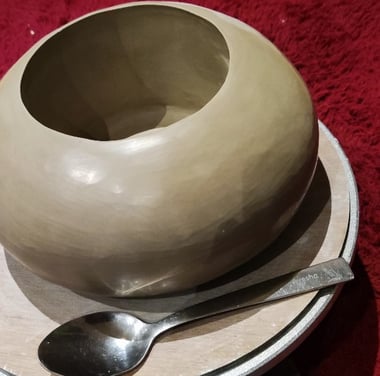



Nature, Artistry, Sustainability
Transforming nature into beautiful, functional creations.
Harvesting Connections
ayeshaweekes@gmail.com
07958487488
© 2024. All rights reserved.
